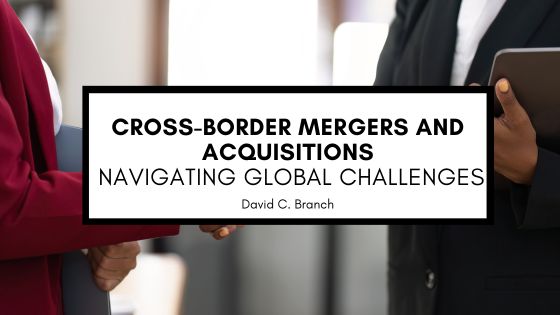Cross-border mergers and acquisitions (M&A) have become increasingly prevalent in today’s globalized economy, as companies seek to expand their reach, access new markets, and capitalize on growth opportunities around the world. However, navigating the complexities of cross-border M&A presents unique challenges, including cultural differences, regulatory hurdles, and geopolitical risks. In this article, we will explore the dynamics of cross-border M&A and discuss strategies for successfully navigating the global challenges involved.
Introduction to Cross-Border Mergers and Acquisitions:
Cross-border M&A refers to transactions in which companies from different countries merge or one company acquires another located in a different country. These transactions are driven by various factors, including market expansion, synergy realization, access to resources, and strategic positioning in key regions.
Key Challenges in Cross-Border M&A:
Several challenges must be addressed when undertaking cross-border M&A:
- Cultural Differences: Cultural differences between countries can impact communication, decision-making, and business practices. Understanding and respecting cultural nuances is essential for building trust and fostering successful integration post-acquisition.
- Regulatory and Legal Complexity: Cross-border M&A transactions are subject to a myriad of regulatory and legal requirements, including antitrust laws, foreign investment regulations, tax laws, and labor laws. Navigating these complexities requires thorough due diligence and expert legal counsel.
- Geopolitical Risks: Geopolitical factors such as trade tensions, economic instability, and political unrest can pose risks to cross-border M&A transactions. Changes in government policies or international relations can impact deal timelines, valuations, and feasibility.
- Currency Fluctuations: Exchange rate fluctuations can affect the valuation and financial performance of cross-border transactions. Hedging strategies may be necessary to mitigate currency risk and protect the value of the deal.
- Integration Challenges: Integrating companies from different countries involves harmonizing business processes, systems, and cultures. Language barriers, regulatory differences, and logistical challenges can complicate integration efforts and delay value realization.
Strategies for Navigating Global Challenges:
Despite the complexities involved, several strategies can help mitigate the risks associated with cross-border M&A:
- Thorough Due Diligence: Conduct comprehensive due diligence to assess the target company’s financial health, regulatory compliance, market position, and cultural fit. Engage local experts to navigate country-specific issues and identify potential red flags.
- Cultural Integration Planning: Develop a cultural integration plan to address differences in communication styles, work practices, and organizational norms. Invest in cultural sensitivity training for employees to foster mutual understanding and collaboration.
- Legal and Regulatory Expertise: Seek legal and regulatory expertise to navigate the complexities of cross-border transactions. Engage local legal counsel with knowledge of the regulatory landscape and experience in cross-border deal-making.
- Political Risk Assessment: Conduct a thorough assessment of geopolitical risks and their potential impact on the deal. Stay informed about changes in government policies, trade agreements, and international relations that may affect the transaction.
- Strategic Communication: Maintain open and transparent communication with stakeholders throughout the M&A process. Proactively address concerns, manage expectations, and provide regular updates on progress and milestones.
- Flexibility and Adaptability: Remain flexible and adaptable in response to changing circumstances and unexpected challenges. Build contingency plans to mitigate risks and address unforeseen obstacles that may arise during the deal process.
Cross-border mergers and acquisitions offer significant opportunities for companies to expand their global footprint, access new markets, and drive growth. However, navigating the complexities of cross-border transactions requires careful planning, thorough due diligence, and strategic execution. By understanding the unique challenges involved and implementing effective strategies for risk mitigation, companies can successfully navigate the global landscape of M&A and unlock value for stakeholders in an increasingly interconnected world.

